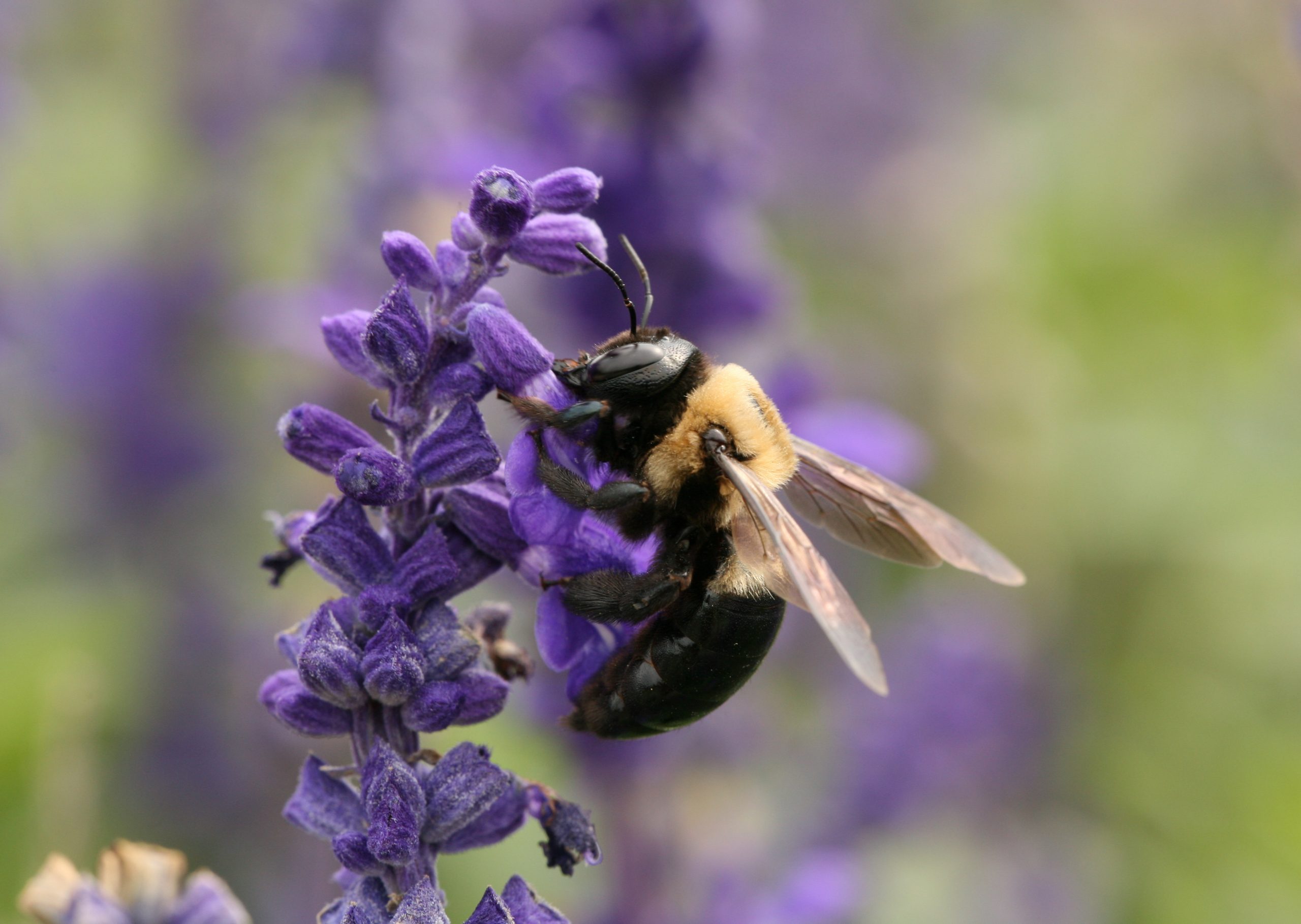What to Do About Carpenter Bees
Spring has sprung when birds begin to sing, flowers bloom, trees bud, and butterflies make an appearance. Another, mostly unwanted, sign of the season is the incessant buzzing and boring of carpenter bees.
Getting Rid of Carpenter Bees Without Pesticides
There are many ways to control or eradicate carpenter bees. Some methods don’t include pesticides – many while keeping the bees alive. Other methods will kill the bee. One thing to note is that carpenter bees are pollinators which are important to our food chain.
No Kill Methods
- Noise – Carpenter bees do not like loud noises. Fortunately, bees tend to leave their nest if they hear music or other loud noises near the infestation. This may work well if the area is not close to neighbors or is separated from the home. Unfortunately, the bees may eventually return to the area. It would be wise to take advantage of their absence with preventative measures.
- Oils – Sprays made from citrus or almond oils have shown success in repelling carpenter bees. Spray in and around the nest to keep them away from the home.
- Beekeeper – Hiring a professional beekeeper is the best way to protect the bees. They will come to the home and remove the nest. The nest will be relocated to a location that is better for both bees and homeowner. There may be a cost associated with relocating the nest.
Kill Methods
- Soapy Water. Spraying soapy water on the bees will kill them. The soap will dissolve the wax coating on the body of the bee allowing them to drown.
- Tennis Racket. Swatting the bees with a tennis racket is an effective way to kill them. The males do not sting, but the females do have the capability. Be aware of this when using the tennis racket method to kill the bees.
- Bee Traps. Bee traps can be purchased commercially or made at home. Plans and videos on how to make the traps can be found online. The manufactured bait in the trap will lure the bee – although as soon as the trap has one bee, more are sure to follow. Once inside the trap, the bee is unable to escape.
Getting Rid of Carpenter Bees with Pesticides
Sometimes no matter what you do, the bees are persistent. The continual damage to a home can lead the homeowner to using pesticides to get rid of the bees. There are a few ways to accomplish this.
- Insecticide Powder. You apply insecticidal powder directly into the holes the bees created. Applying to the nest ensures that the bees are killed. You only need to apply this powder once.
- Insecticide Spray. Unlike the powder, you should apply an insecticidal spray twice during the spring approximately 3-4 weeks apart.
- Professional Exterminator. Not everyone feels comfortable using pesticides. Professional exterminators can handle this situation for a fee. Some companies will even guarantee their work making the cost more worthwhile.
Ways to Prevent Carpenter Bee Infestations
If carpenter bees have been a problem in the past, they will more than likely be a problem in the future. Fortunately, there are things a homeowner can do to keep the bees away.
- Plug. Make sure you plug any holes bored by the bees. Use a wooden dowel rod, putty, or caulking as the plug. Plugging should be done when all signs of the bees are gone – usually in the fall.
- Paint/Stain. After the holes have been plugged, they must be sealed. Paint or stain can be used to seal the hole.
- Spray. Spraying insecticide before bee season will help deter the insects from the area.
- Be Vigilant. Carpenter bees loved aged, soft wood. Therefore, keeping an eye on the condition of the home is paramount to keep insects of all types away. The bees love decks, soffit boards, railings, and similar wooden structures. Take notice if these areas start to wear.
Carpenter Bees Have Their Place in the Ecosystem
The damage carpenter bees do is annoying and can become expensive. It is important to understand, however, that these insects are a valuable part of the ecosystem. Because they are pollinators, you should protect them as part of the food chain. When trying to eradicate these pesky insects, doing so without killing them is recommended.

Leave a Reply